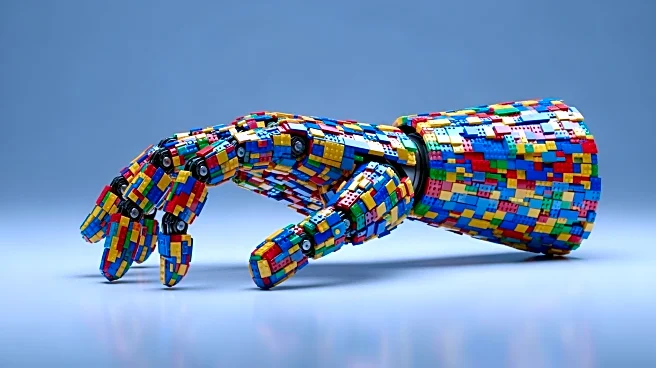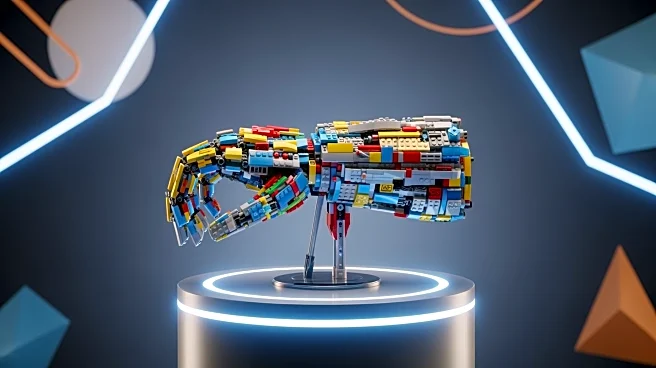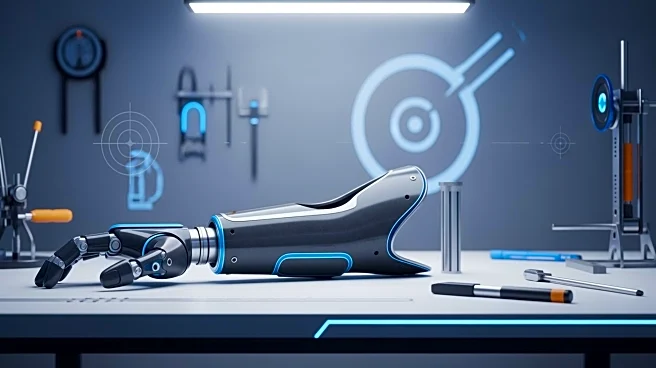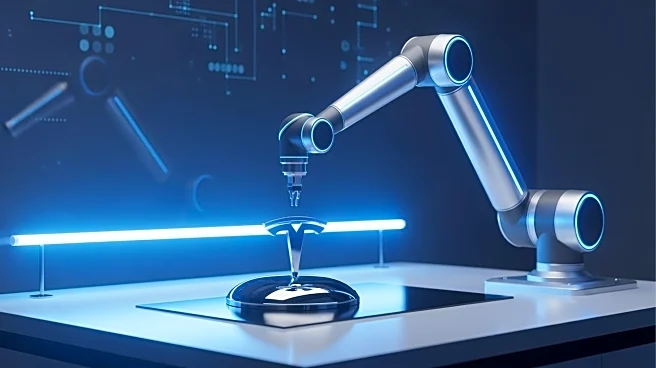What's Happening?
A 16-year-old named Jared Lepora has created a robotic hand entirely from Lego Mindstorms pieces, inspired by his father's work in robotics at the University of Bristol. The hand, which features four fingers
with three joints each, is driven by two motors using tendons. It can grasp and move objects similarly to a leading 3D-printed robotic hand, although it is slower and less powerful. Despite the discontinuation of Lego Mindstorms in 2022, Jared's design allows for easy updates with newer Lego pieces. The hand successfully grasped various household items during tests, demonstrating the educational potential of Lego in robotics.
Why It's Important?
This development highlights the potential of using accessible materials like Lego for educational purposes in robotics. It showcases how young innovators can contribute to technological advancements without needing expensive or specialized equipment. The project also emphasizes the importance of creativity and resourcefulness in STEM education, potentially inspiring other students to explore similar projects. By demonstrating capabilities close to those of more advanced robotic hands, Jared's creation could influence educational approaches and encourage the integration of hands-on learning in schools.
What's Next?
Jared's robotic hand could lead to further exploration of Lego-based robotics in educational settings, potentially influencing curriculum development. As the design allows for updates with newer Lego pieces, it may inspire ongoing innovation and adaptation. Educational institutions might consider incorporating similar projects to engage students in STEM fields, fostering creativity and problem-solving skills. Additionally, the project could attract interest from educators and researchers looking to explore cost-effective methods for teaching robotics.
Beyond the Headlines
The project raises questions about the accessibility of robotics education and the role of creativity in technological innovation. It challenges the notion that advanced technology requires expensive materials, suggesting that ingenuity can overcome resource limitations. This could lead to broader discussions on how to democratize access to STEM education and encourage diverse participation in technological fields.











